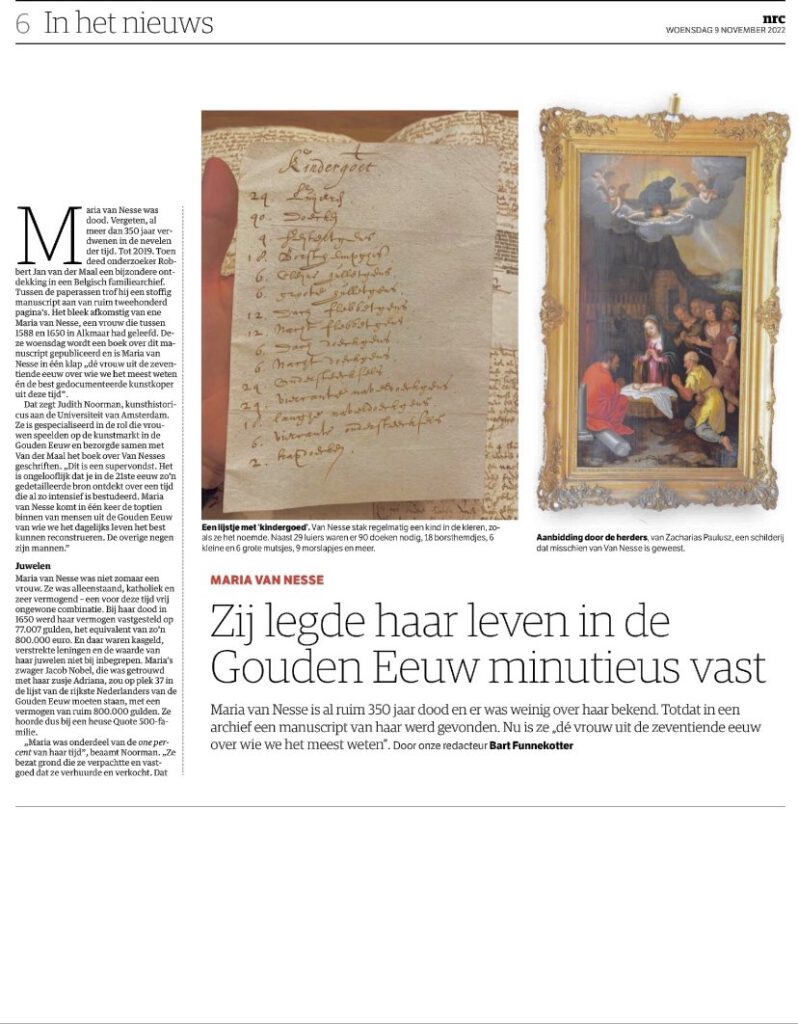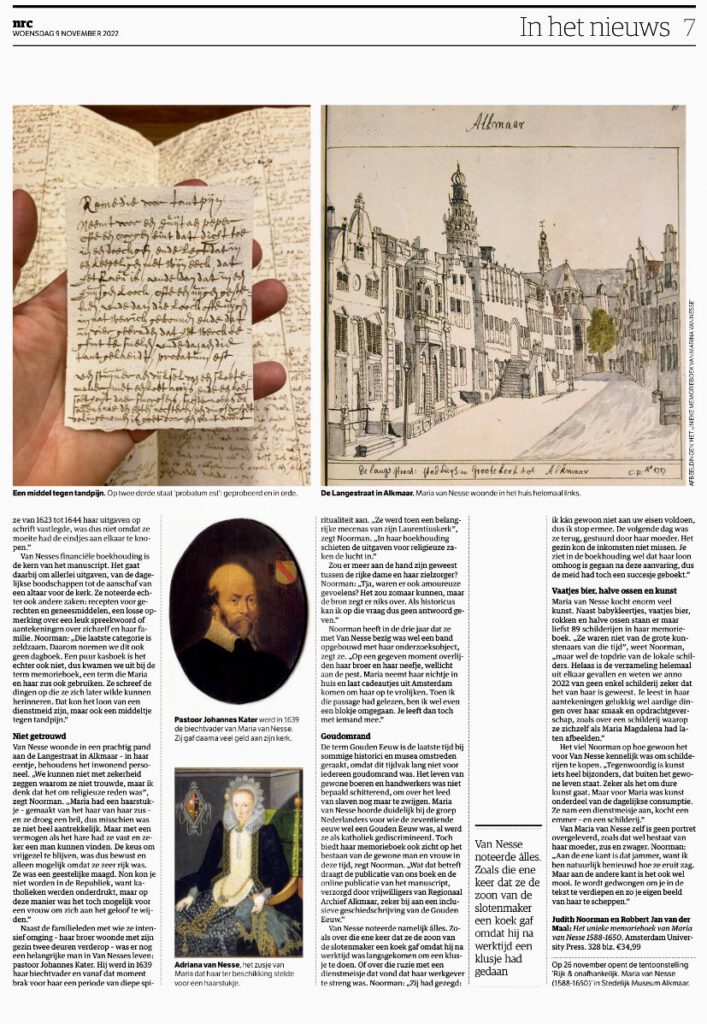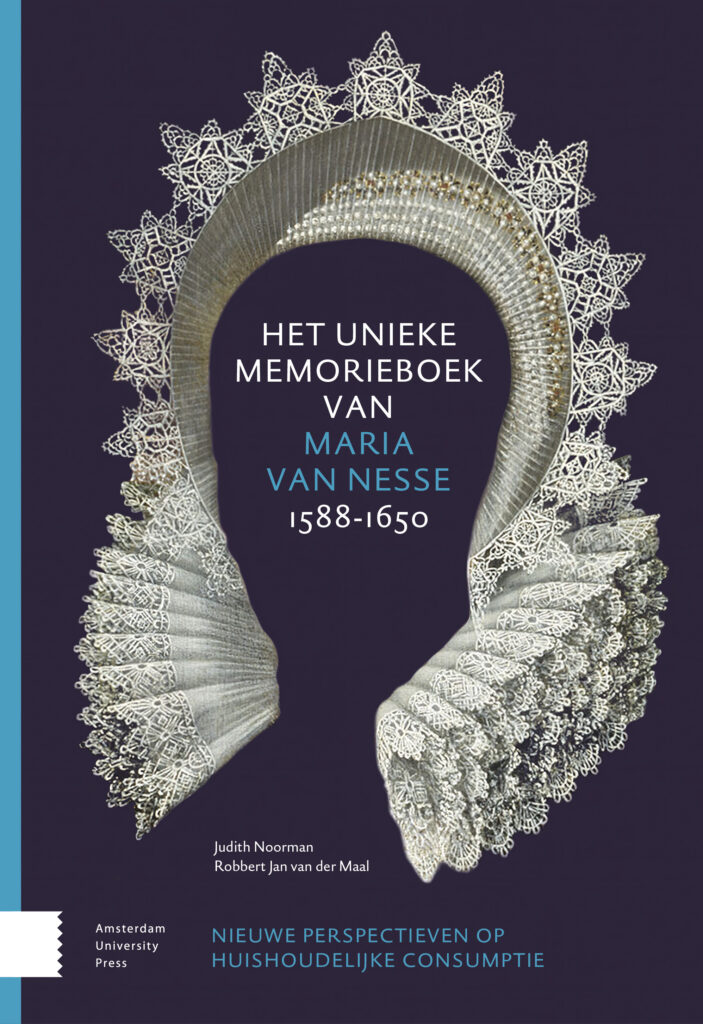
Maria van Nesse
A unique archival document about the seventeenth-century Northern Netherlands has surfaced in a Belgian family archive. The simple-looking booklet contains a wealth of detailed information about daily life in the seventeenth century as seen through the eyes of one woman: Maria van Nesse. The discovery instantly identifies Van Nesse as the best-documented art buyer of Rembrandt’s time, male or female. Judith Noorman and Robbert Jan van der Maal researched her life and wrote a book about her: Het unieke memorieboek van Maria van Nesse (1588-1650). Nieuwe perspectieven op huishoudelijke consumptie.
‘A researcher can only dream about a source like this, or so I thought. From Van Nesse’s wardrobe and jewellery to her paintings and donations to the church; her spending and household consumption is described in unprecedented detail. The volume alone is dizzying! Maria van Nesse is instantly one of the best documented individuals of the Dutch Republic. Anyone interested in seventeenth-century Dutch art should know about her.’
Judith Noorman, assistent professor Art History, University of Amsterdam
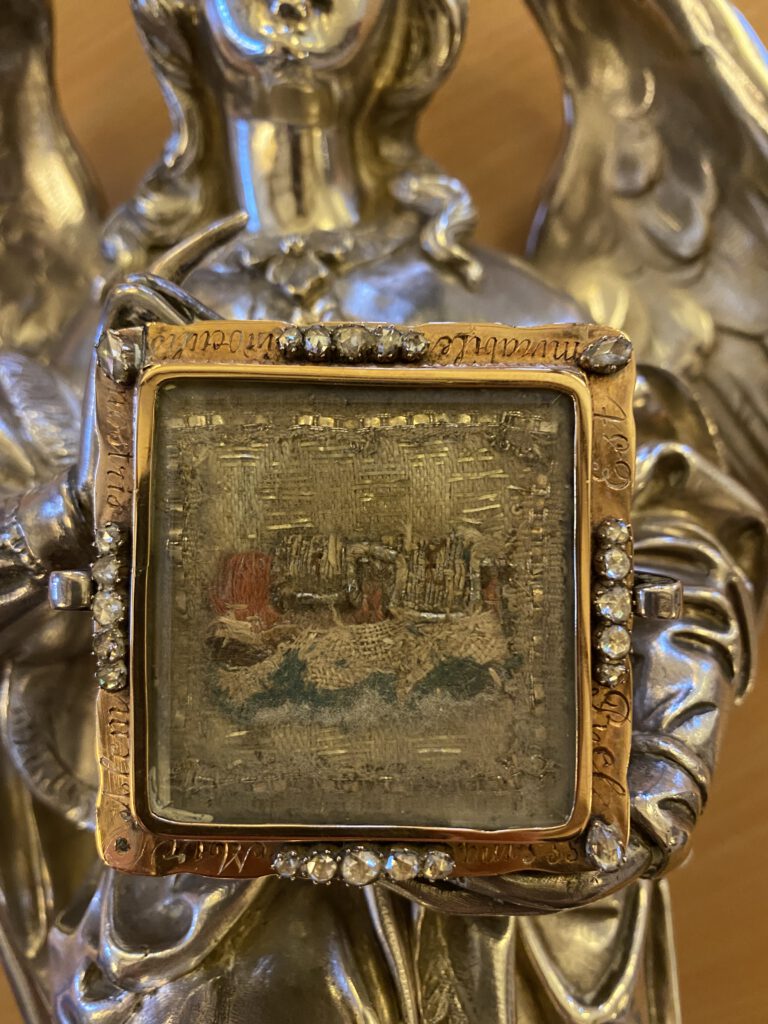
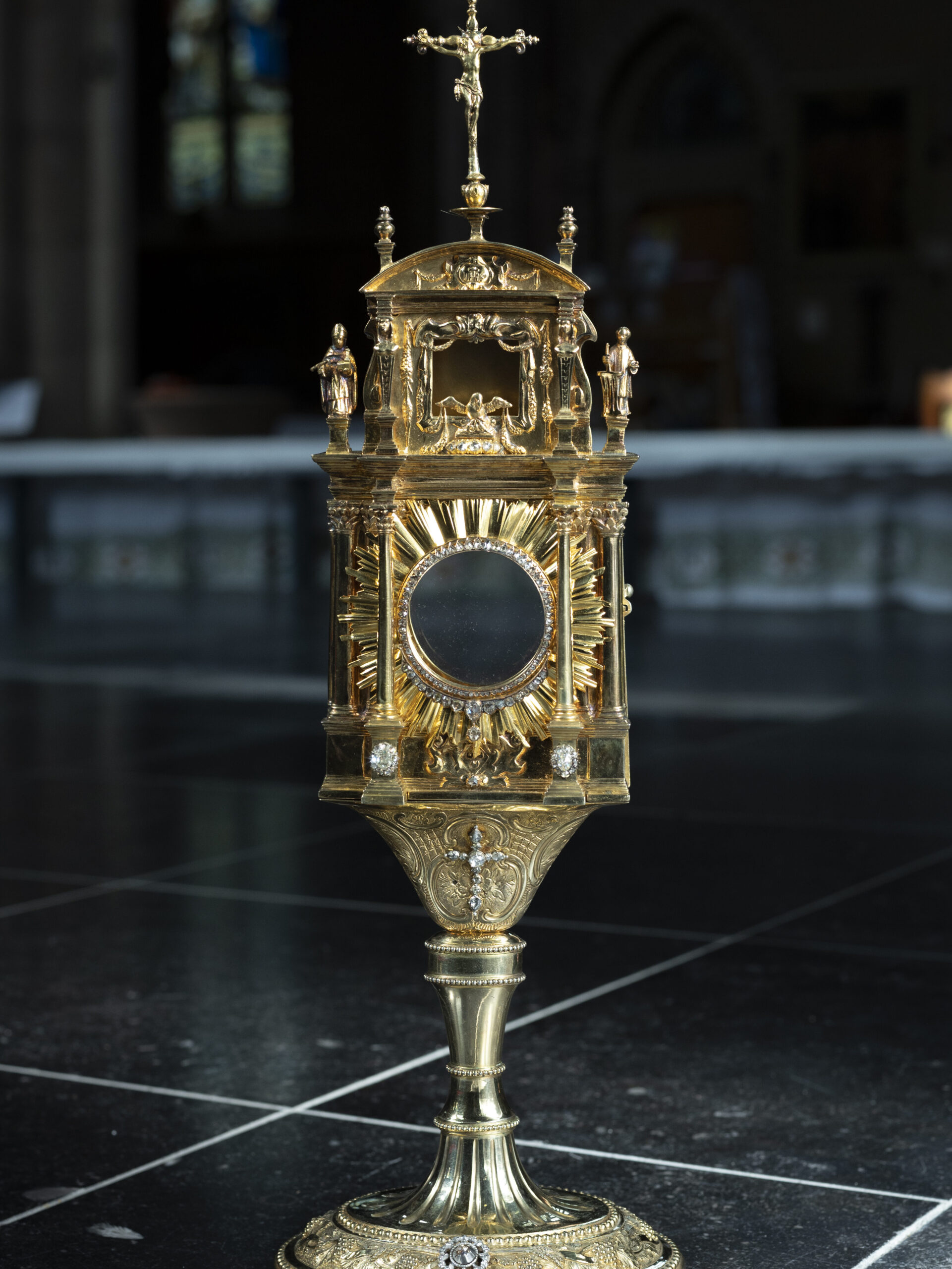
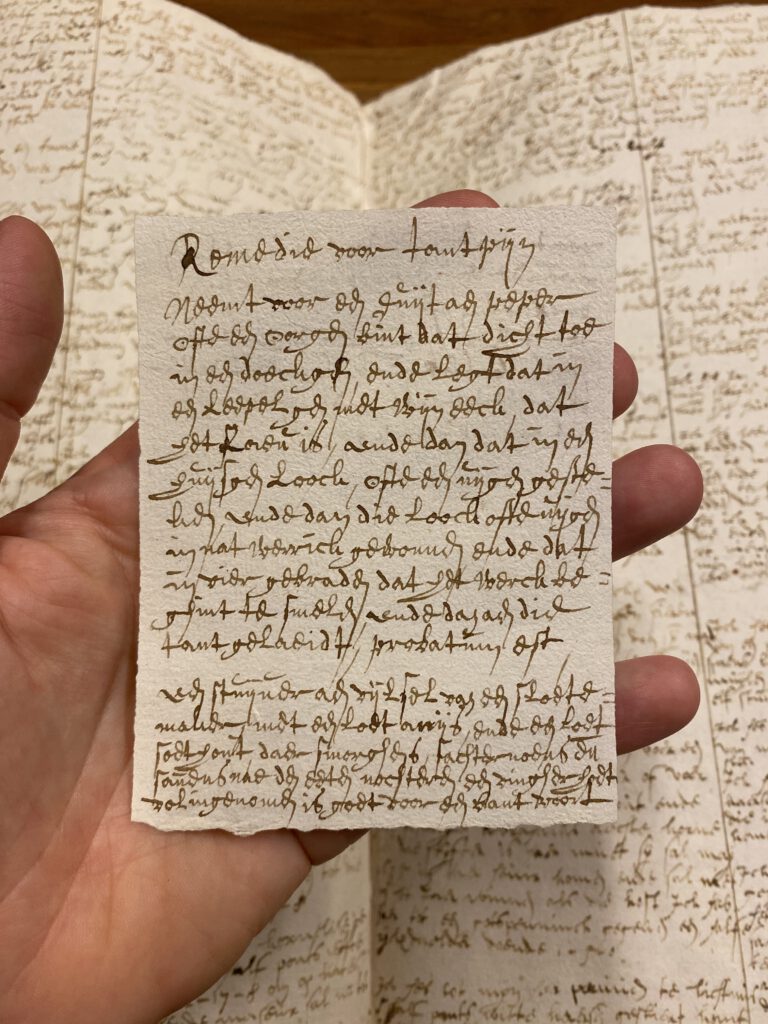
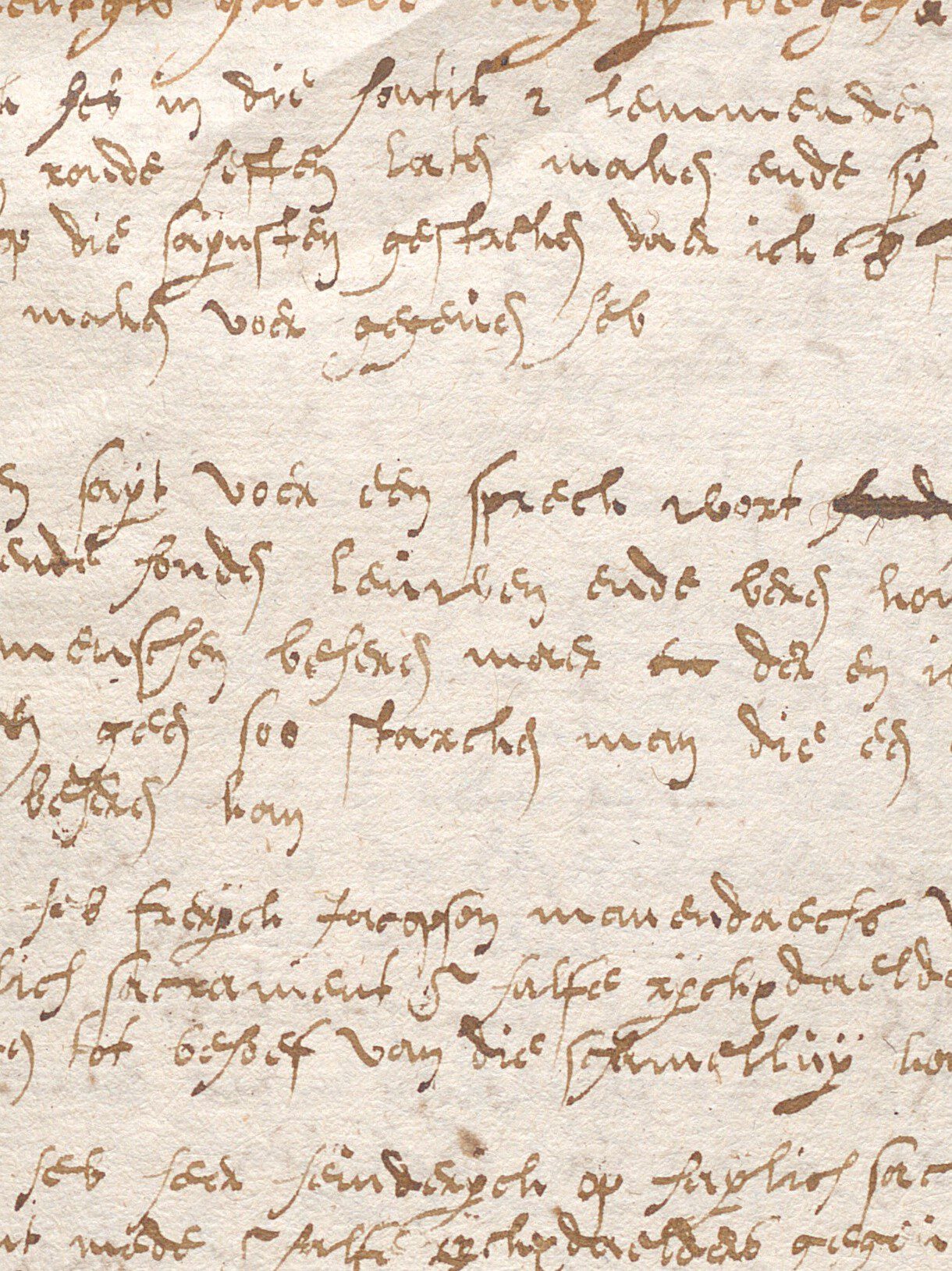
Under the direction of Alkmaar archivist Harry de Raad, assisted by Frits van Yperen, a group of twenty Alkmaar volunteers skilfully and carefully transcribed Van Nesse’s ‘memorieboek’ (pdf) and provided it with a glossary, list of names and list of coins. Both documents are available on the website of Alkmaar Regional Archives
‘It has been said that the past is like a foreign country. This is especially true of the history of people with no or little power. Their actions and circumstances have always been poorly documented. But thanks to Maria van Nesse’s extensive notes – and its thorough analysis by Judith Noorman and Robbert Jan van der Maal – we gain a surprisingly clear view of the world of a Catholic woman in seventeenth-century Alkmaar. For a museum curator like me, a document like this is a goldmine: it provides material for many new stories about old Alkmaar.’
Christi Klinkert, curator Stedelijk Museum Alkmaar
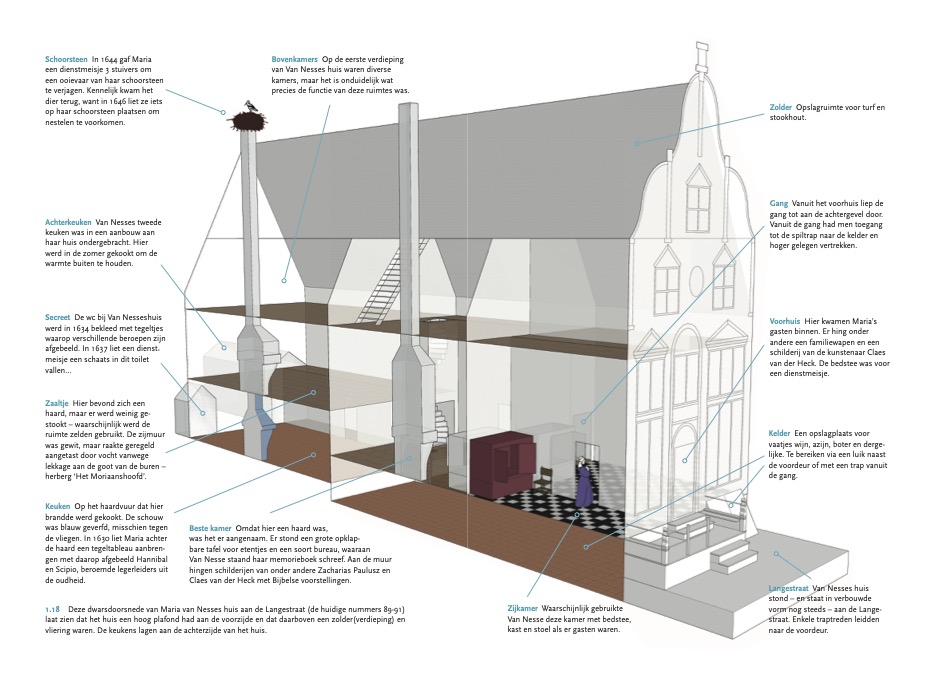
Rich & independent
Maria van Nesse (1588-1650)
Stedelijk Museum Alkmaar reconstructs Maria van Nesse’s remarkably independent life in Alkmaar, based on her unique memory book. The exhibition is on view from November 26, 2022 to March 19, 2023.
